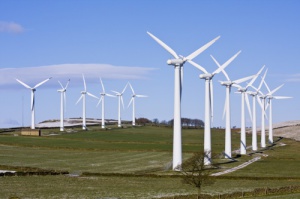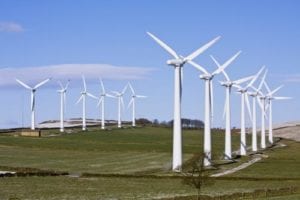 The potential to produce electricity from wind turbines in South Africa is significantly greater and much more widely spread than initially thought, a recent study by the Council for Scientific and Industrial Research (CSIR) reveals.
The potential to produce electricity from wind turbines in South Africa is significantly greater and much more widely spread than initially thought, a recent study by the Council for Scientific and Industrial Research (CSIR) reveals.
Starting with REDZs
Renewable Energy Development Zones (REDZs) for wind and solar PV selected by the Department of Environmental Affairs are a good starting point. When expanding the REDZ further, the study shows that the wind resource should not be the limiting factor in the selection of these zones, but the focus should be mostly on environmental considerations.The same applies for the long-term grid planning: The wind resource is excellent in such wide areas that it should be further investigated whether to build wind farms only in areas where the grid already exists or where it will exist in the near future.
The total technical wind power potential in South Africa if wind farms were to be installed all across the country except in exclusion areas (National Parks, settlement areas, etc.) is 6700GW, which is a wind fleet large enough to supply the entire world’s electricity demand. In order to generate 250 TWh/yr, which is approximately today’s South African electricity demand, 0.6% of the available South African land mass would have to be dedicated for wind farms with an installed capacity of approximately 75 GW. In addition to solar PV, this study has demonstrated that South Africa has immense wind energy potential, and this knowledge can be used to strategically drive the energy industry and the economy by significantly increasing the share of renewables in the power generation mix.Primary findings
The primary findings of the study include the following:- More than 80% of South Africa’s land mass has enough wind resource for economic wind farms with very high annual load factors of greater than 30%.
- The vast size of the South African power system allows for a very strong portfolio effect. Short-term fluctuations in the aggregated wind power feed-in are significantly reduced by wide spatial distribution. Where an individual wind farm’s power output can fluctuate by ± 90% of its installed capacity within 15 minutes, a widespread wind fleet’s 15-minutes-fluctuations are reduced to ± 4% of installed capacity.
- A share of 50% wind energy in South Africa’s electricity supply does not increase the short-term (intra-hour) gradients if the wind fleet is widely distributed; no negative impact on reserve requirements.
- Up to a 65% energy share in electricity supply from a combined wind and solar PV fleet can be achieved without any significant excess energy.
- South Africa exhibits low seasonality in both wind and solar PV supply, which makes the integration easier, because no seasonal storage is required to balance fluctuations.








